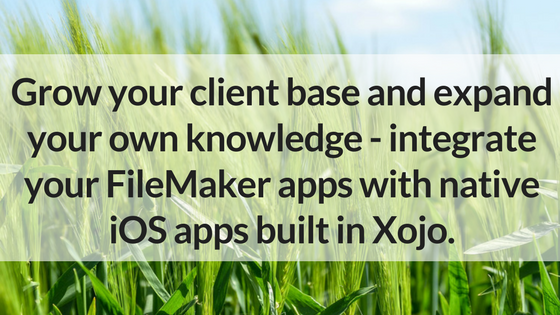At each XDC (Xojo Developer Conference) I lay out, however roughly, what Xojo’s short-term development roadmap looks like for the next 12 months or so. Despite how well-conceived that roadmap may be, sometimes unexpected events occur that change or delay things.
Comments closedXojo Programming Blog Posts
The latest version of Raspbian, the operating system for the Raspberry Pi, was released in August. It’s called Raspbian Stretch and you can read more about it from the official launch blog post, Raspbian Stretch has arrived.
Comments closedAt Xojo we’re a company of programmers who work with programmers and after 21 years or so, we like to think we know our stuff. In honor of International Programmer’s Day today, we’d like to offer our experience in the form of a listicle 😉
Whether you’re new to programming or an experienced developer, there are some things you’ll just never find in a reference manual. We’re passionate about writing good code and these are our 10 tips to be a better programmer.
Comments closedThe latest XojoTalk Podcast – Paul talks with Wayne Golding of Axis Direct about how his company uses Xojo, Xojo 2017 Release 2, New Zealand and more.
Comments closedThe other day Geoff was working an iOS project and asked me if there was a way to hide the border on an iOS Text Field. It turns out that this is pretty easy. Here’s how.
Comments closedIf the deprecations and changes to the FileMaker platform have you searching for alternatives, Xojo is a solid place to start. FileMaker developers use Xojo for a variety of reasons, including lower cost, more powerful apps and native iOS apps.
Xojo is a powerful, full-featured development tool and as far as professional development tools go, Xojo is amazingly easy to use. For people with programming experience or those that want to learn, Xojo is a great choice for creating powerful apps to meet any business need – from cross-platform desktop apps, web apps, mobile and iOT apps.
Comments closedBefore we dive into what it means for developers, and in particular Xojo and other cross-platform developers, that IBM is pushing the Mac, let’s look at the recent history of the computer market. 10 years ago, the Mac had market share in the low single digits and was ignored by most of the world. These days the Windows PC market is in decline while the market share for Mac is rising at the expense of Windows.
How does IBM fit into this?
Comments closedManipulating text can be a time-consuming operation. I recently found myself with the need to insert text in various places in a large text document. Normally I would use a regular expression to solve this problem, but this is an iOS app and Xojo doesn’t have regular expressions available for iOS just yet. So I wrote some code to loop through the document and find and replace. Then I wrote some better code to do it a lot faster.
Comments closedLast month the Australian government suggested they might require tech companies to provide back doors into their systems to help law enforcement use those back doors to catch bad guys. Apple immediately dispatched people to go talk with them about it. Apple’s stance has been that such back doors don’t help catch bad guys and just make the rest of us less secure. Is that really true?
Comments closed

